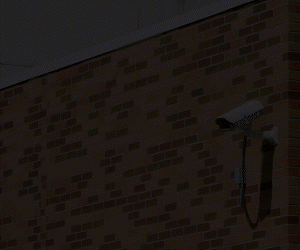Following FEMA guidelines, school staff are trained to respond to emergencies based on a detailed, situation-specific protocol when activating their ICS, and efficient communication is vital to a successful response.
Technologies Support Communication for ICS Plans in Schools
Districts focus primarily on mass notifications, using different channels of communication with multiple redundancies in case a communication system is no longer functioning. Ann L. Cyr, risk manager for Carson City School District in Nevada, says her district’s emergency response team has access to mass communication systems, messaging, social media and Motorola radio devices, depending on what the situation requires.
“The communication plan defines how personnel will communicate with each other during an emergency. It’s dependent on the incident and what communications are available,” Cyr says.
“In the event of a natural disaster, landlines and cellphones may not be functioning, and in that case, the plan for emergency communications may indicate that Motorola radios will be used and what channels will be used.”
Technology has become crucial for supporting ICS plans in schools, says Elizabeth Rupert, a security consultant at Joffe Emergency Services, and most of the tech tools boost communication efforts.
Among the key emergency response technologies currently being used in schools:
- Emergency Notification Systems send multiple types of communication to a large group of people at one time; for example, when all parents receive an automated call, text and email during an emergency.
- Mobile and Wearable Panic Buttons activate alarms and notify ICS teams for swift responses.
- Internal Messaging Applications provide quick access to emergency documents, reunification planning tools and live-tracking portals.
- Student Information System (SIS) Integration Platforms allow essential data, such as names and emergency contacts, to be imported across platforms, increasing the likelihood that the right stakeholders receive the right communication.
- Visitor Management Systems track visitors to enhance campus security.
There are many internal communication platforms for schools to choose from. What’s most important is knowing which platform’s features best align with a school’s needs.
“Some offer great integration with the student information system. Others have daily attendance, and even more have pickup and drop-off support, incident management systems, template capabilities and more,” says Rupert. “Choosing the right vendor for an incident management and messaging platform can be one of the most impactful decisions a school can make in terms of its overall safety program.”
DISCOVER: Technology helps speed physical security responses.
Advanced Technologies Enhance Schools’ ICS Readiness
There are other, more advanced tech tools available for schools looking to enhance ICS readiness and unify internal communication platforms into a single, web-based solution.
A few options, Rupert says, can help streamline critical information during an incident, including:
- ID scanning for reunification
- Interactive maps
- Fully integrated SIS, visitor management, documentation and training systems
Schools can also integrate HR software into their ICS technology portfolio to provide easy access to faculty and staff emergency contacts, similar to parental communication during emergencies.












